The new Bentley Flying Spur is a stunning car, no matter which direction you’re looking from – specs, tech, luxury or design. The third-generation of the sedan sister to the Continental GT is being touted differently this time around – Crewe says that the “super-luxury sports sedan” is for both drivers and the driven, offering a combination of limo luxury and sports sedan performance.
That sounds like trying to bridge the best of both worlds, but the ingredients are there for sure. The latest Spur is powered by a 6.0 litre twin-turbo W12 engine that’s hand-built in Crewe. Claimed to be the most advanced 12-cylinder engine in the world, it makes 635 PS and 900 Nm of torque (previous-gen W12 S did 626 hp/820 Nm), which propels the 2,437 kg limo to 100 km/h in just 3.8 seconds. Top speed is 333 km/h.
Bentley says that a more forward front axle position improves weight distribution. That, along with active all-wheel-drive, all-wheel steering and Bentley Dynamic Ride are behind the sports sedan part of the equation.
The previous Flying Spur employed a permanent AWD system with a fixed 60:40 power split to the axles. The new model uses a clutched system which delivers two-wheel drive to the rear axle. Depending on the road conditions and wheel slip, it will then automatically send drive to the front axle as required. Turn-in response is dramatically improved and the understeer effect experienced with fixed AWD is virtually eliminated, Bentley says.
Torque distribution varies according to the selected Drive Dynamics Mode. In Comfort and Bentley modes, the system will send up to 480 Nm of torque to the front axle to offer greater grip and drivability. In Sport, it limits the available torque to the front axle to 280 Nm, maintaining a higher torque level at the rear for a more dynamic feel. Torque is also managed across each axle by a torque-vectoring-by-brake system.
Electronic all-wheel steering, which enhances both stability at highway speeds and manoeuvrability around town, appears for the first time on a Bentley. During low-speed manoeuvres, the system steers the rear wheels in the opposite direction to the front wheels. This has the effect of shortening the wheelbase and reducing the turning circle. At high speed, all wheels turn in the same direction for more stability.
The new Flying Spur uses three-chamber air springs which contain 60% more air volume compared to the previous model. This allows more scope to vary from sporting levels of spring stiffness to luxury limo refinement depending on the selected mode. The new CDC (Continuous Damping Control) allows continuous regulation of the dampers. Four ride height sensors constantly measure the distance between the axle and the body.
The Bentley Dynamic Ride System is designed to improve both handling and ride comfort. A 48-volt system controls an electronic actuator unit which manages the stiffness of the anti-roll bar, changing the stiffness on demand to combat cornering forces and keep the big saloon level.
The new Flying Spur shares the largest iron brakes in the world with the latest Conti GT, with 420 mm front discs. Lastly, there’s an adaptive tailpipe control valve with variable position settings. The way exhaust gases flow into the rear half of the system has been tuned to provide a more discreet exhaust note.
While the tech and performance are great, it’s the Flying Spur’s design and luxury details that will set the British limo apart from the flagship saloons of the German premium brigade. And boy does it look and feel special.
The Flying Spur’s new body has a 130 mm longer wheelbase (for 3,194 mm) and sports stronger, more muscular lines that sweep the full length of the car, which is 5,316 mm. Those surfaces are made possible by aluminium superforming, a process first proven on the current Continental GT. Bentley claims best-in-class body stiffness, which benefits handling and rigidity.
The front axle has been pushed far forward, and overall, the Spur is significantly more dynamic looking that the second-generation 2013 car, which itself is a much better looking saloon than the 2005 original. There are no shortage of fascination points, both outside and in the cabin, which by the way is not a 100% reproduction of the Conti GT’s dashboard. All of what’s good there is found here as well though, including the cool rotating central display.
We’ll let the expert – Brett Boydell, head of interior design at Bentley – walk you through the many design details and finer points of Crewe’s “super-luxury sports sedan”. This beguiling blend of technology and tradition will be coming to Malaysia this year.
Looking to sell your car? Sell it with Carro.

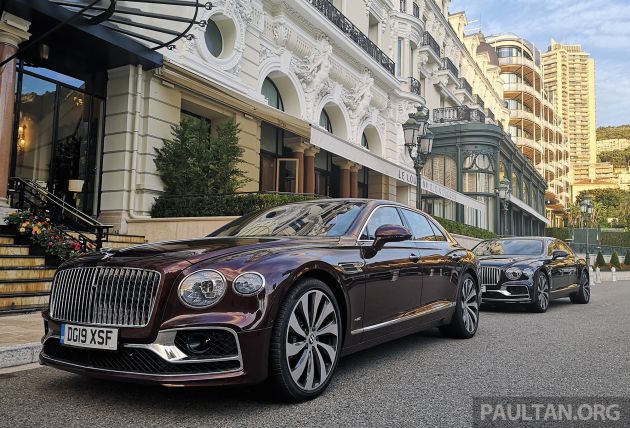






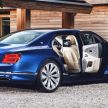
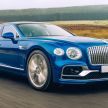
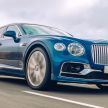





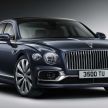
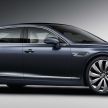
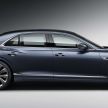
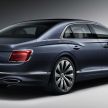
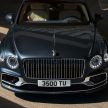

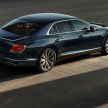
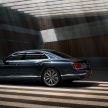
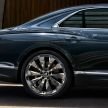
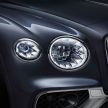
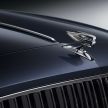
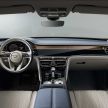
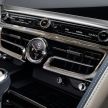
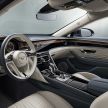
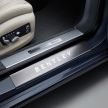
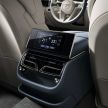
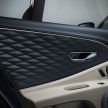
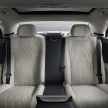
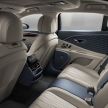


One of the things they don’t tell you about these cars: It’s too damn heavy. One pothole, and the run-flat tires go flat. Same thing with the Rolls Royce Wraith and Phantoms.
Bentley is a luxury car to be driven by owner, meanwhile Rolls Royce is a luxury car for owner to be chauffeur around.